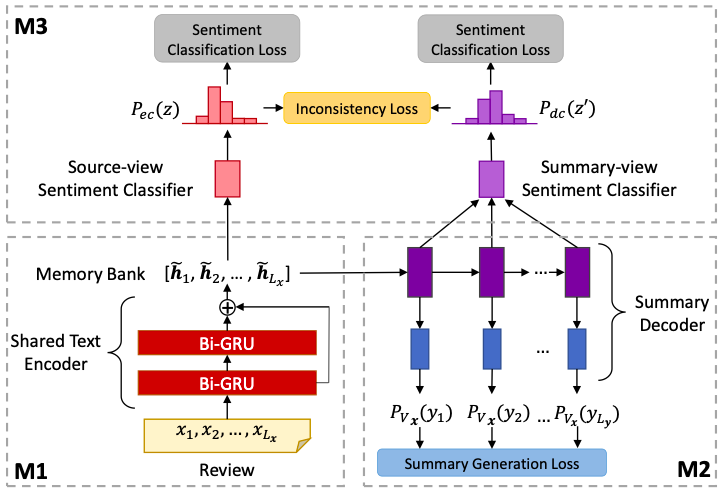A Unified Dual-view Model for Review Summarization and Sentiment Classification with Inconsistency Loss
Acquiring accurate summarization and sentiment from user reviews is an essential component of modern e-commerce platforms. Review summarization aims at generating a concise summary that describes the key opinions and sentiment of a review, while sentiment classification aims to predict a sentiment label indicating the sentiment attitude of a review. To effectively leverage the shared sentiment information in both review summarization and sentiment classification tasks, we propose a novel dual-view model that jointly improves the performance of these two tasks. In our model, an encoder first learns a context representation for the review, then a summary decoder generates a review summary word by word. After that, a source-view sentiment classifier uses the encoded context representation to predict a sentiment label for the review, while a summary-view sentiment classifier uses the decoder hidden states to predict a sentiment label for the generated summary. During training, we introduce an inconsistency loss to penalize the disagreement between these two classifiers. It helps the decoder to generate a summary to have a consistent sentiment tendency with the review and also helps the two sentiment classifiers learn from each other. Experiment results on four real-world datasets from different domains demonstrate the effectiveness of our model.
PDF Abstract



